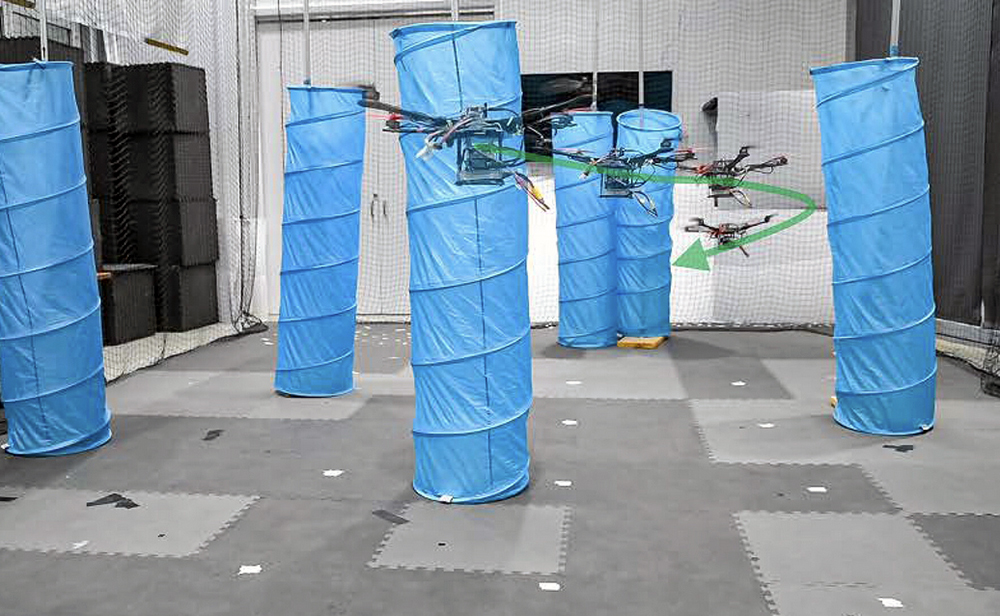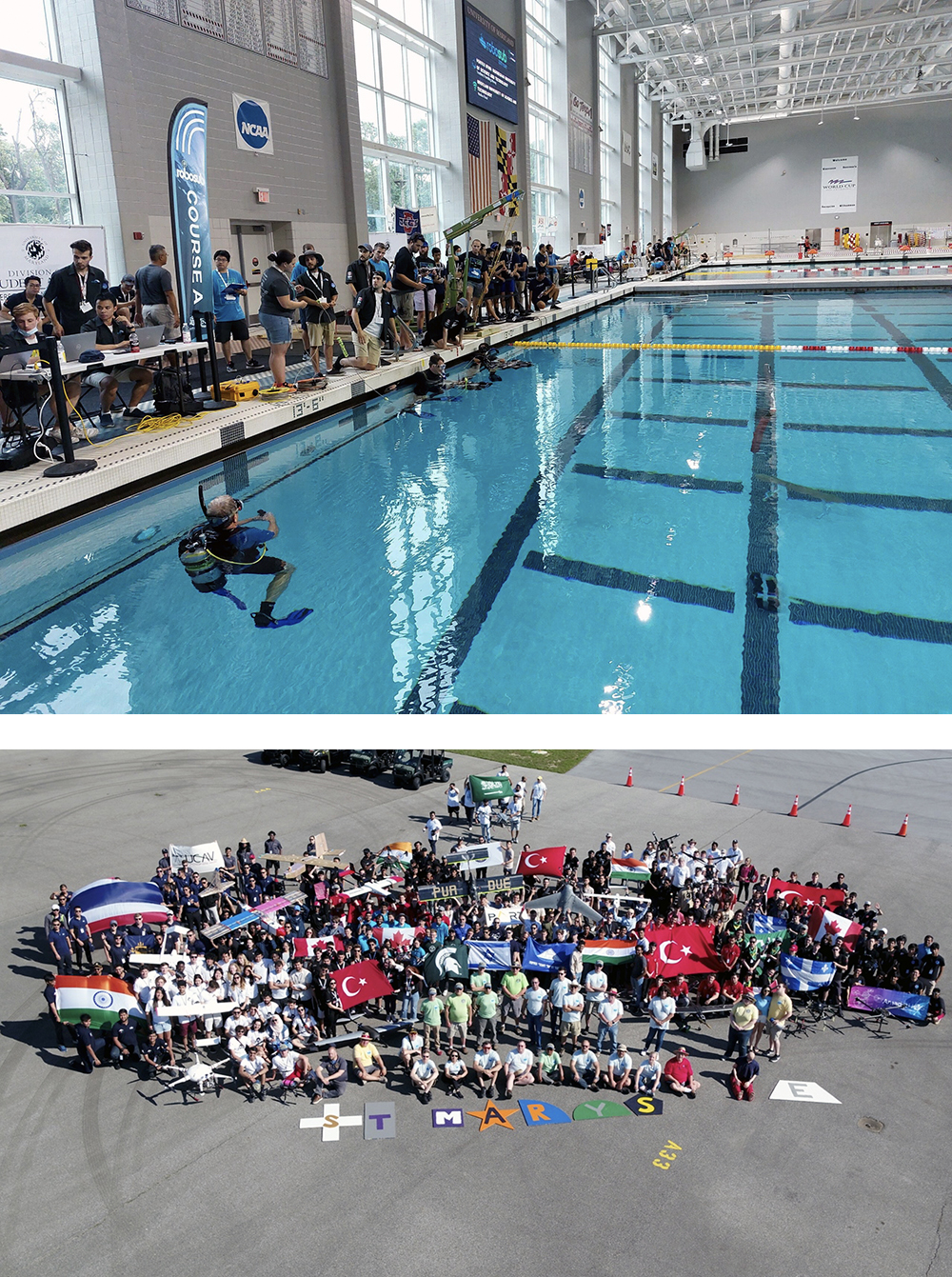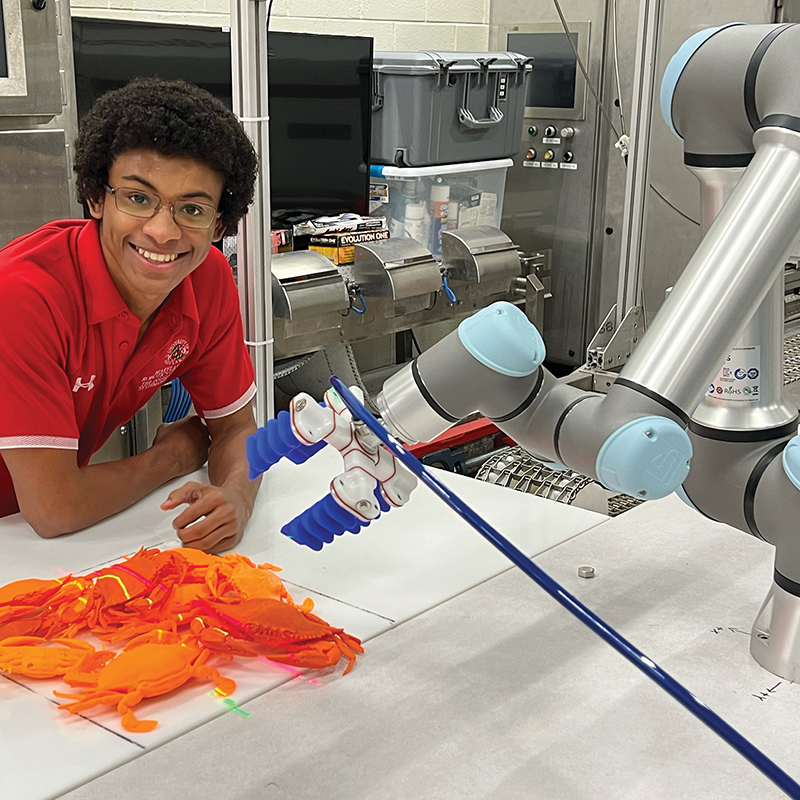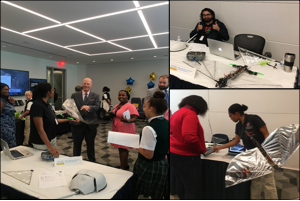News Story
ISR announces creation of Maryland Robotics Center
The Institute for Systems Research within the A. James Clark School of Engineering is proud to announce the creation of the new Maryland Robotics Center. The mission of the interdisciplinary research center is to advance robotic systems, underlying component technologies, and applications of robotics through research and educational programs that are interdisciplinary in nature and based on a systems approach. Professor S.K. Gupta (ME/ISR) is director of the center.
The center's research activities include all aspects of robotics including development of component technologies (e.g., sensors, actuators, structures, and communication), novel robotic platforms, and intelligence and autonomy for robotic systems. The center’s 25 faculty members span seven academic departments: Aerospace Engineering, Civil and Environmental Engineering, Computer Science, Electrical and Computer Engineering, Mechanical Engineering, Bioengineering and Biology. Research projects in the center are supported by the major federal funding agencies including NSF, ARO, ARL, ONR, AFOSR, NIH, DARPA, NASA, and NIST.
The center will host Maryland Robotics Day on Sept. 10. This is a free, half-day event that introduces the University of Maryland's many robotics research projects, faculty, students and facilities. Participants will be introduced to the Maryland Robotics Center, be treated to lunch, and be given the opportunity to tour labs, visit with faculty and students, and see research in action.
Current research areas of the Maryland Robotics Center
. Collaborative, Cooperative, Networked Robotics: bio-inspired robotics concepts, time-delayed robotics, robotic swarms, robotic cooperation under limited communication, and distributed robotics.
. Medical Robotics: MRI-compatible surgical robotics, haptics-enabled AFM, exoskeletons for rehabilitation, and magnetic micromanipulation for drug delivery.
. Miniature Robotics: mesoscale robots; bio-inspired sensing, actuation, and locomotion; cell manipulation (optical, AFM based, and micro fluidics); and micro and nano manipulation (optical and magnetic).
. Robotics for Extreme Environments: space robotics and autonomous deep-submergence sampling systems.
. Unmanned Vehicles: micro air vehicles, unmanned sea surface vehicles, unmanned underwater vehicles, and planetary surface rovers.
Published August 10, 2010







